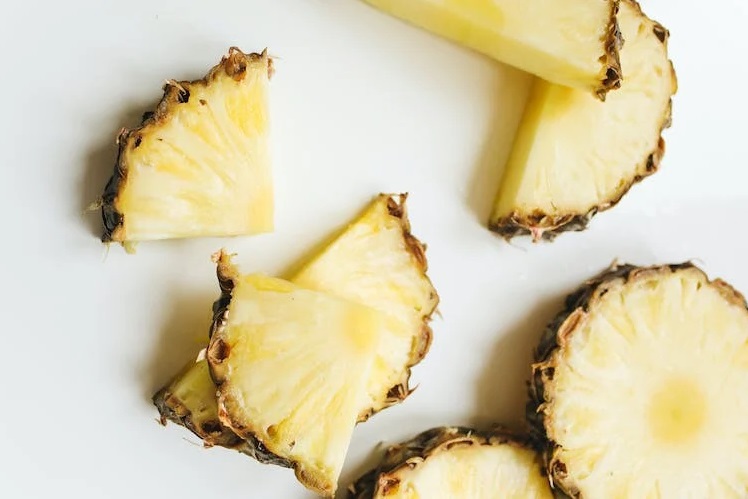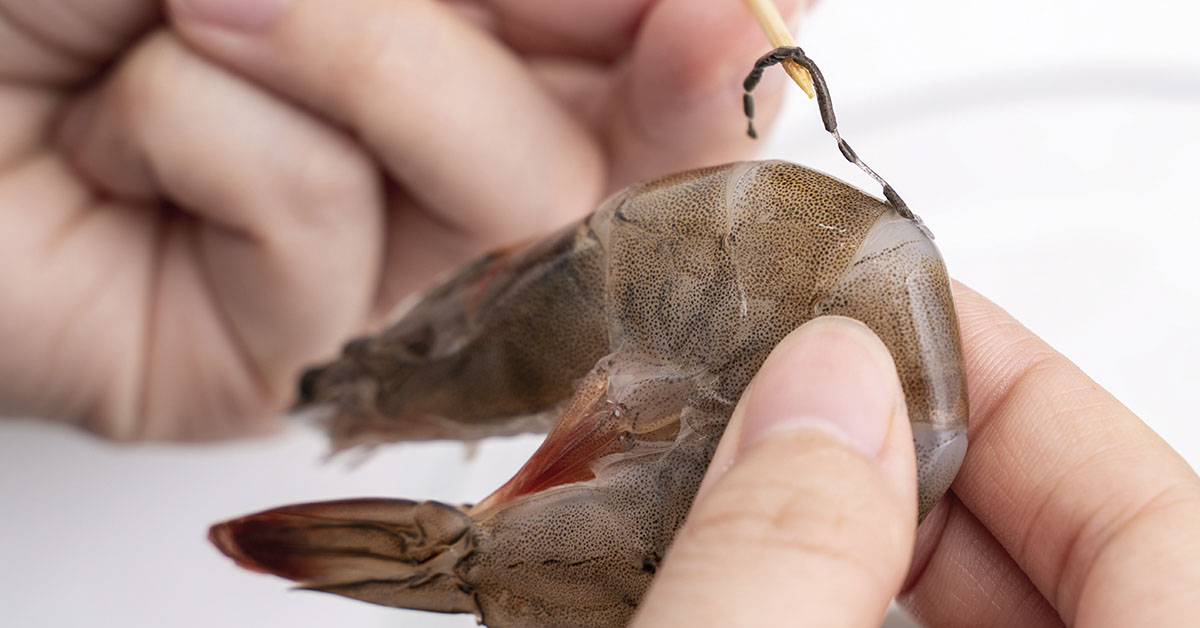Regardless of whether you view food as simply a source of energy or a sensory experience to be savored, it’s an essential component for sustaining life and performing everyday activities. In fact, on average, each person in the United States consumes approximately 1,996 pounds of food every year. That’s quite remarkable! Whether your cravings lean towards Hershey’s kisses or you opt for a plate of carrots, you might be intrigued to learn these 17 unexpected facts about food.
1. Powdered donuts and paint have something in common
Titanium dioxide is a substance that’s commonly added to a variety of products to enhance their bright white appearance. Since its initial use as a white pigment in 1923, it’s been incorporated into numerous items such as ceramics, textiles, paint, and personal care products. Interestingly, titanium dioxide can also be found in many consumable goods such as ranch dressing, suntan lotions, candy, deodorants, and even powdered sugar sprinkled on top of donuts.
In the United States, this compound is generally considered safe for human consumption. Some popular snack brands like Hostess and Tastykake still use it in their mini donuts and Donettes. However, Dunkin’ Donuts made the decision to remove titanium dioxide from its donuts back in 2015. Conversely, in May 2021, the European Food Safety Authority concluded that titanium dioxide could no longer be considered a safe food additive.
2. Cheese sometimes contains cheese mites
There are various instances where mites have been utilized in the maturation of cheese. One of these examples is Milbenkäse. Also known as “mite cheese,” which is a German product made by combining fresh cheese made from cow milk. Known as quark – with caraway and salt. The mixture is then molded and placed in a container with rye flour and cheese mites.
Over a few months, these minuscule arachnids consume the cheese’s surface. Their digestive enzymes transform the crust’s color, and when humans consume the final product, they consume the mites alongside the cheese. Other “mite cheeses” include Cabrales from Spain and Mimolette, produced in France and Belgium.
Mites aren’t the only tiny arthropods involved in cheese production. Casu marzu, for instance, is made by allowing maggots to invade sheep milk. Although it is considered a delicacy by many, it is illegal to sell due to the possibility of intestinal damage from surviving maggots. Nevertheless, according to Sardinian Paolo Solinas, “the maggot infestation is the spell and delight of this cheese.”
3. Skittles contain an additive that has been shown to damage DNA

Skittles, a well-known American candy, are recognized for their vibrant colors, fruity flavors, and lively advertisements. Despite their delicious taste, some of their components have sparked concern outside of the United States. Specifically, Skittles contain titanium dioxide. A substance that some studies indicate can lead to damaged DNA and cancer with prolonged exposure to its nanoparticles.
While research on these concerns continues, various countries have restricted the importation of the candy. However, these restrictions are due to the dyes employed in Skittles rather than titanium dioxide itself. For example, Sweden and Norway have entirely banned Skittles, and it’s possible that the European Union may do the same.
4. Mussels and most other mollusks contain microplastics – what a dirty food
The existence of microplastics in the environment has raised apprehensions regarding their impact on the planet’s health and all living beings. As plastic production is projected to surge up to 2050, the microplastics found in animals – including human blood – are anticipated to increase.
These chemicals enter the human body through various means, including air, water, and food. Consumption of seafood, particularly mollusks (such as mussels, clams, and oysters), presents a high risk of ingesting microplastics due to the vast amount of plastic present in the world’s oceans.
In 2021, a study found that: “…24.4 trillion pieces of microplastics in the world’s upper oceans, with a combined weight of 82,000 to 578,000 tons – or the equivalent of roughly 30 billion 500-mL plastic water bottles.” Mussels were found to have the most microplastics, a reality succinctly stated by researcher Dr. Christian Laforsch: “If you eat mussels, you eat microplastics.”
Read: Prepping: 15 Survival Foods To Always Keep Around The House Just In Case
5. A food fact that may surprise you. The black lines in shrimp are not veins

Shrimp feed on various items like living and decomposing algae, plants, worms, and other floating debris in the surrounding water. Occasionally even consuming the waste of other living creatures. When caught, killed, and sold to consumers, the remnants of their omnivorous diet are still evident in what is often referred to as ‘veins.’
While a raw shrimp may show a visible vein, artery, and nerves, the most conspicuous “vein” is, in fact, the intestinal tract. The black substance visible is fecal matter. Removing this line and its contents are commonly known as deveining, but it’s primarily a process of “de-pooping.” While deveining shrimp is not necessary before consumption, not doing so might alter the shrimp’s taste.
6. French fries and condoms also have something in common
Polydimethylsiloxane, also known as E900 or PDMS, is a silicone-based polymer. It’s commonly found in condom lubricants and other consumer products such as Silly Putty, skin and hair care items, and hydraulic fluid. It’s often used as an anti-foaming agent, and this property led to its inclusion in the French fry-making process.
Adding PDMS to fryers helps prevent hazardous splatters. According to a 2017 report from the European Centre for Ecotoxicology and Toxicology of Chemicals, PDMS is considered to have a low toxicity profile. “Extensive environmental, animal, and epidemiology studies have been conducted on PDMS. In all cases, PDMS has been shown to pose little or no risk to the environment or human health.”
In 2018, a study conducted in Japan suggested that PDMS could stimulate hair growth in mice. However, it is important to note that no evidence suggests that eating French fries could cure baldness or promote hair growth in humans. Of course, we didn’t have to tell you that. Right?
7. This food fact is almost sci-fi worthy. Pineapple – the food that ‘eats you back’

Pineapple contains a pair of enzymes called bromelain that breaks down proteins. This substance is also commonly found in meat tenderizers due to its effectiveness in breaking down protein. When you eat pineapple, the bromelain enzyme works to break down the proteins in your mouth. The fruit’s natural acidity further intensifies this sensation. Resulting in a tingling, twinging, or even burning sensation on your tongue or other parts of your mouth.
Bromelain is unique to pineapples and comes in two different forms. The bromelain found in the stems is more efficient at digesting proteins than that found in the fruit. Other fruits like kiwifruit, papaya, and figs contain enzymes such as actinidin, papain, and ficin, respectively, which have similar digestive properties.
8. Confectioner’s glaze may contain a secretion produced by bugs
Shellac, also known as confectioner’s glaze, is a popular ingredient in candies and sweets that gives them a shiny appearance. This ingredient is made from the secretions of the lac bug, which is why it is also called “lac.” The female lac insect feeds on sap from certain trees and excretes a protective coating around her eggs, which hardens upon exposure to air. This coating is then harvested, refined, and processed for various products.
Shellac is commonly used on candy corn, jelly beans, and chocolates like Milk Duds and Raisinets. Skittles removed shellac from its product in 2009, but some Skittles still contain Red 40, which is derived from cochineal insects, also known as scale insects. Carmine, the dye obtained from these insects, is sometimes called “beetle juice,” but it contains no actual bugs.
9. Bread and Yoga Matts Have This Ingredient in Common
Bread is a staple food around the world and can be found in almost every grocery store. It’s not just made from grain but also contains various additives that improve its texture and appearance. One such additive is azodicarbonamide, which strengthens the dough and lightens the color of the flour.
Interestingly, this same compound is also used in the production of yoga mats and can be found in many other industrial contexts. The European Union, however, has banned its use in food products due to concerns over its safety. As of November 2022, the European Union consists of 27 member countries.
10. Broccoli, Brussel Sprouts, Cabbage, Cauliflower, and Kale are all descendants of Wild Mustard. A rather cool food fact if you ask us!

/ Pexels
The origins of some of our favorite cruciferous vegetables might surprise you. Broccoli, cauliflower, kale, cabbage, and Brussels sprouts all share a common ancestor – the wild mustard plant in the Brassicaceae family. Over 2,000 years ago, farmers started selectively breeding different plant variations to create different vegetables.
They chose plants with large leaves to make kale, plants with large flower clusters before they bloomed to make broccoli, and plants with dense clusters of leaves to make cauliflower. Similarly, they propagated plants with round flower clusters to make cabbage and miniature versions of cabbage to make Brussels sprouts.
In recent years, efforts to make Brussels sprouts more appealing have resulted in a surge in demand. Dutch scientists identified the compounds that made Brussels sprouts bitter and cross-pollinated different versions to create more palatable varieties.
Plant breeder Cees Sintenie noted that this process greatly improved the taste. This could explain why Brussels sprouts are no longer the dreaded vegetable they once were. Despite their less-than-glamorous origin story, these cruciferous vegetables are now a beloved part of many people’s diets.
Read: 11 Foods That Stay Good After Their Expiration Date
11. This food fact is a little creepy: Figs may contain wasps
Certain types of female wasps, called fig wasps, lay their eggs inside figs by crawling into the fruit through a small hole. However, because the hole is so small, it is uncertain whether the wasp won’t be able to exit the fruit after laying its eggs. Sometimes, the wasp may become trapped and die inside the fig.
This has led to rumors that when you eat a fresh fig, you may be consuming a wasp. However, this is not entirely accurate, as any crunchiness in the fig is more likely to seed. While the presence of a dead wasp in figs is possible, the enzymes in the fruit are likely to have broken down most of the insect.
12. German chocolate cake is not named after the country, but rather a per

The name of this coconut and pecan-filled chocolate cake suggests a German origin, but surprisingly, the cake is about as German as Crème Brûlée. In fact, it was invented by Samuel “Sam” German, who created sweet baking chocolate for Baker’s Chocolate company in 1852. The chocolate in question was named after its inventor. And although it was popular, it wasn’t until a Texas home baker submitted her chocolate cake recipe to the Dallas Morning News in 1957 that the cake became legendary.
The recipe was a hit, and Baker’s “German chocolate” sales skyrocketed that year. The recipe was republished in newspapers across the US, but somewhere along the way, the cake’s name lost its apostrophe-S. Unfortunately, Germany now gets all the credit for this deliciously American treat. All because a man named German invented a bar of baking chocolate.
13. Tempura, isn’t actually from Japan
Tempura, a popular dish in Japanese cuisine, actually has roots in Portugal. When Portuguese missionaries arrived in Japan in the 16th century, they introduced the Japanese to the concept of coating food in flour and frying it. This technique caught on and was further developed in Edo, which was one of the world’s largest cities in the 18th century and attracted a diverse mix of people.
During this time, food vendors began setting up stalls and carts to feed the many single Japanese men who came to the city. Tempura, with its quick and easy outdoor frying process, was a perfect fit for these outdoor food vendors. Fish, which was abundant in Edo, became the base of the dish, and vendors fried it in sesame oil to reduce the fishy smell.
To make the dish more convenient, vendors began putting the tempura on sticks to eliminate the need for utensils and reduce greasy fingers. Today, outdoor food courts are still popular in Japan, particularly in Fukuoka, which is known for its open-air dining. While tempura may have originated in Portugal, it has become an important part of Japanese cuisine and culture.
14. Is ranch dressing basically sunscreen? No, it’s not, but you’ll see why some might think so.
Ranch dressing is a popular condiment that is commonly used on salads, buffalo wings, French fries, and many other foods. According to a report from the Association for Dressings and Sauces in 2017, dressings, particularly white ones like ranch, are increasingly being used on foods other than salads.
The white appearance of ranch dressing is, in part, attributed to the use of titanium dioxide, a compound that is also used in sunscreens and personal care products to provide a pale appearance. It was first used for its white coloring properties in 1923 and has since found use in various industries, including paint, ceramics, textiles, and food products such as dressings, cheese, and icing.
However, FDA guidelines dictate that titanium dioxide cannot exceed 1% of a food product. Although it is considered safe for consumption in the US, some companies, such as Dunkin’ Donuts, have removed it from their products. In May 2021, the European Food Safety Authority stated that titanium dioxide is no longer safe as a food additive and has been phased out since early 2022.
15. This food fact is just nasty – Raisins are filthy
It is widely known that a raisin is a dehydrated grape, but the drying method can vary. While sun-drying is one method, it can be a slow process, so artificial light and heat are often used to speed it up. However, drying grapes in the open air can attract insects and expose the fruit to dirt, sand, and other contaminants.
To prevent insect infestations, many companies use pesticides, but these can be difficult to remove during processing. A 2020 US Department of Agriculture report found that 99% of tested raisins were contaminated with two or more pesticides.
16. Seaweed is used in dairy production
Seaweed is a ubiquitous ingredient in food, even if you don’t intentionally order it. Carrageenan, a type of seaweed, is frequently utilized as a thickening and emulsifying agent in dairy and non-dairy products like chocolate milk, cheese, ice cream, and cottage cheese.
Keep Reading: Why the Government Controls the Color of Our Food
Sources
- “17 Facts About Food We Learned In 2022 That Made Us Hungry For More.” Ranker. Melissa Sartore. December 2, 2022
- “The Most Mind-Blowing Food Facts You Never Knew.” Eat This Not That. April 7, 2021.

